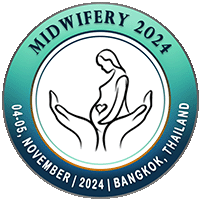
Natalia Y Lemish
Uzhhorod National University, UkraineTitle: Modern methods of great obstetrical syndromes prognostication (literature review)
Abstract
The term “Great Obstetrical Syndromes” (GOS) was widely implemented to clinical practice after 2009, due to publications of G. C. Di Renzo and R. Romero. The effective prognostical methods are still being searched for early correction of the disorders and decrease of negative consequences on mother and fetus.
GOS – is a name for a group of gestational complications that occur in approximately 15% of pregnancies. They may cause severe gestational period complications and lead to fetal and maternal mortality, so these syndromes require extraordinary attention, constant monitoring and treatment. The main characteristics of these syndromes are: multiple etiology; a long preclinical period; frequent fetal involvement; adaptive in nature.
The development of these syndromes is a result of complicated relationships between maternal and fetal genomes and the environment. The GOS include: preterm labour, premature rupture of membranes, preeclampsia, intrauterine growth restriction, macrosomy, missed pregnancy, antenatal fetal death, spontaneous abortions, placental abruption. Recent publications indicate gestational diabetes (GD) as one of the GOS.
GOS are characterized by generalized inflammation, endothelial dysfunction, increased trombine production, the prevalence of antiangiogenic factors that commonly lead to multiple organs and systems damage.
According to results of investigations, the main cause of GOS is pathology of deep placentation. Also, one of pathophysiological links in GOS development is dysfunction of haemostasis system.
The risk factors of GOS development include anemia, endometriosis, polycystic ovarian syndrome, teenage age, chronic arterial hypertension, previous pregnancy complications by preeclampsia and preterm labour.

